1900 DE DION BOUTON TYPE G VIS-À-VIS Registration No. Not Registered Car No. TBA Engine No. 3518 Red and black. Engine: Single cylinder, 4½ hp, with automatic inlet valve; Gearbox: two-speeds forwards; Suspension: front semi-elliptic plus transverse leaf, rear three-quarters-elliptic: Brakes: rear wheels and transmission. Handle-bar steering and column gearchange. Production of the De Dion Bouton vis-à-vis in 1899 finally met the requirement that Count Albert De Dion had set himself 15 years before: to make a light car that would be simple, reliable, have adequate performance and be available at a price that could be afforded by the 'man of modest means'. His partnership with Georges Bouton and Charles Trépardoux produced some successful steam-powered machines, but Bouton's genius in evolving a lightweight high-speed petrol engine to power motor tricycles was the breakthrough that the Count sought. Engines of this type, when applied to a small car with a fool-proof gearbox, were immediately successful. The De Dion Bouton company also pioneered aspects of the motor industry that are now taken for granted: a proper research and development department, interchangeability of parts, rigorous testing, and, value for money. When the voiturette first appeared in 1899 it was fitted with a rear mounted tricycle-type 2¼ hp engine and whilst having front suspension, the back relied solely on the pneumatic tyres to soften the ride. Soon after full-scale production started a change was made to a fully-suspended rear axle. This used the De Dion-system already seen on the firm's larger steam vehicles, which with the benefit of a 'dead' axle and universally-jointed drive shafts, plus three-quarter-elliptic springs, was a significant step forwards. In November 1899 the engine was up-rated to 3½ hp (402 cc) and was equipped with a fully- jacketed cylinder barrel, a water tank and small radiator mounted at the front serving to cool the water. The transmission gears on these voiturettes were in constant mesh and had each speed ingeniously brought into action by separate expanding clutches, so avoiding, in the terminology of the day, the "side-grubbing" of the gear teeth. The gearbox was bolted directly to the tubular chassis, thus, as a bonus, reducing unsprung weight. This car has all the attributes of the early pattern De Dion Bouton voiturette, but is fitted with the 4½ hp engine that was introduced in October 1900. The engine has not been apart for internal inspection but the crankcase external measurements lead us to believe it is a 4½ hp. Fuel is supplied to the engine via a maker's carburettor and both the power unit and the gearbox have correct period lubricators. All the the mechanical aspects seem in good order and it appears that the only requirements are for petrol, oil, water, and a battery to be added, and the car will then be ready for the road. However, since it has not run for a number of years, enthusiasm should be curbed until a thorough check-over has been carried out. The vis-à-vis bodywork is in good condition and care was obviously taken when the car was restored to retain the correct details, including the valance for the front seat. This is an opportunity to buy what many consider to be the best voiturette of its day. That the largest number of London to Brighton runners each year are De Dion Boutons is adequate tribute to the soundness and quality of the products of this pioneering firm.
1900 DE DION BOUTON TYPE G VIS-À-VIS Registration No. Not Registered Car No. TBA Engine No. 3518 Red and black. Engine: Single cylinder, 4½ hp, with automatic inlet valve; Gearbox: two-speeds forwards; Suspension: front semi-elliptic plus transverse leaf, rear three-quarters-elliptic: Brakes: rear wheels and transmission. Handle-bar steering and column gearchange. Production of the De Dion Bouton vis-à-vis in 1899 finally met the requirement that Count Albert De Dion had set himself 15 years before: to make a light car that would be simple, reliable, have adequate performance and be available at a price that could be afforded by the 'man of modest means'. His partnership with Georges Bouton and Charles Trépardoux produced some successful steam-powered machines, but Bouton's genius in evolving a lightweight high-speed petrol engine to power motor tricycles was the breakthrough that the Count sought. Engines of this type, when applied to a small car with a fool-proof gearbox, were immediately successful. The De Dion Bouton company also pioneered aspects of the motor industry that are now taken for granted: a proper research and development department, interchangeability of parts, rigorous testing, and, value for money. When the voiturette first appeared in 1899 it was fitted with a rear mounted tricycle-type 2¼ hp engine and whilst having front suspension, the back relied solely on the pneumatic tyres to soften the ride. Soon after full-scale production started a change was made to a fully-suspended rear axle. This used the De Dion-system already seen on the firm's larger steam vehicles, which with the benefit of a 'dead' axle and universally-jointed drive shafts, plus three-quarter-elliptic springs, was a significant step forwards. In November 1899 the engine was up-rated to 3½ hp (402 cc) and was equipped with a fully- jacketed cylinder barrel, a water tank and small radiator mounted at the front serving to cool the water. The transmission gears on these voiturettes were in constant mesh and had each speed ingeniously brought into action by separate expanding clutches, so avoiding, in the terminology of the day, the "side-grubbing" of the gear teeth. The gearbox was bolted directly to the tubular chassis, thus, as a bonus, reducing unsprung weight. This car has all the attributes of the early pattern De Dion Bouton voiturette, but is fitted with the 4½ hp engine that was introduced in October 1900. The engine has not been apart for internal inspection but the crankcase external measurements lead us to believe it is a 4½ hp. Fuel is supplied to the engine via a maker's carburettor and both the power unit and the gearbox have correct period lubricators. All the the mechanical aspects seem in good order and it appears that the only requirements are for petrol, oil, water, and a battery to be added, and the car will then be ready for the road. However, since it has not run for a number of years, enthusiasm should be curbed until a thorough check-over has been carried out. The vis-à-vis bodywork is in good condition and care was obviously taken when the car was restored to retain the correct details, including the valance for the front seat. This is an opportunity to buy what many consider to be the best voiturette of its day. That the largest number of London to Brighton runners each year are De Dion Boutons is adequate tribute to the soundness and quality of the products of this pioneering firm.

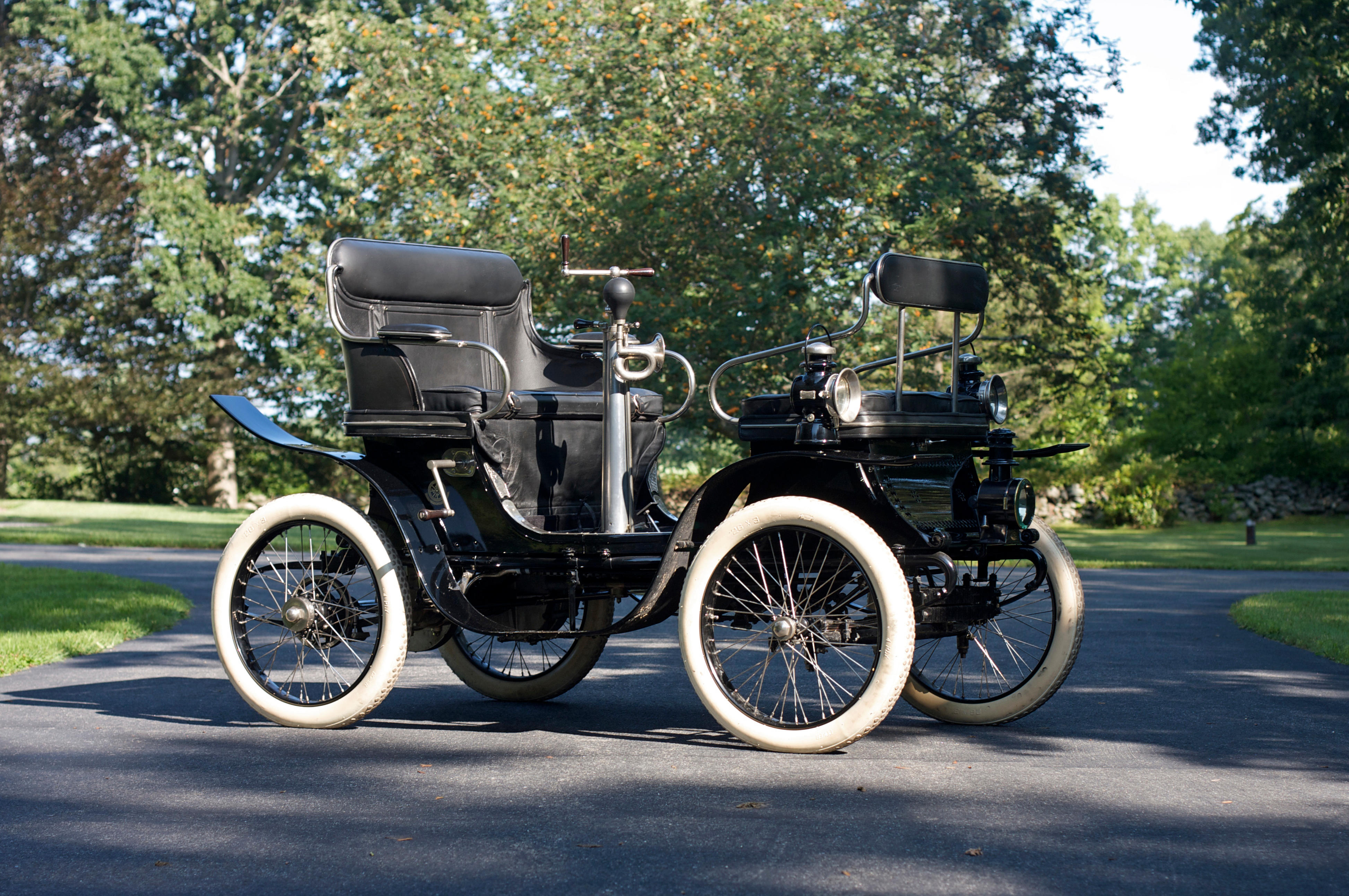
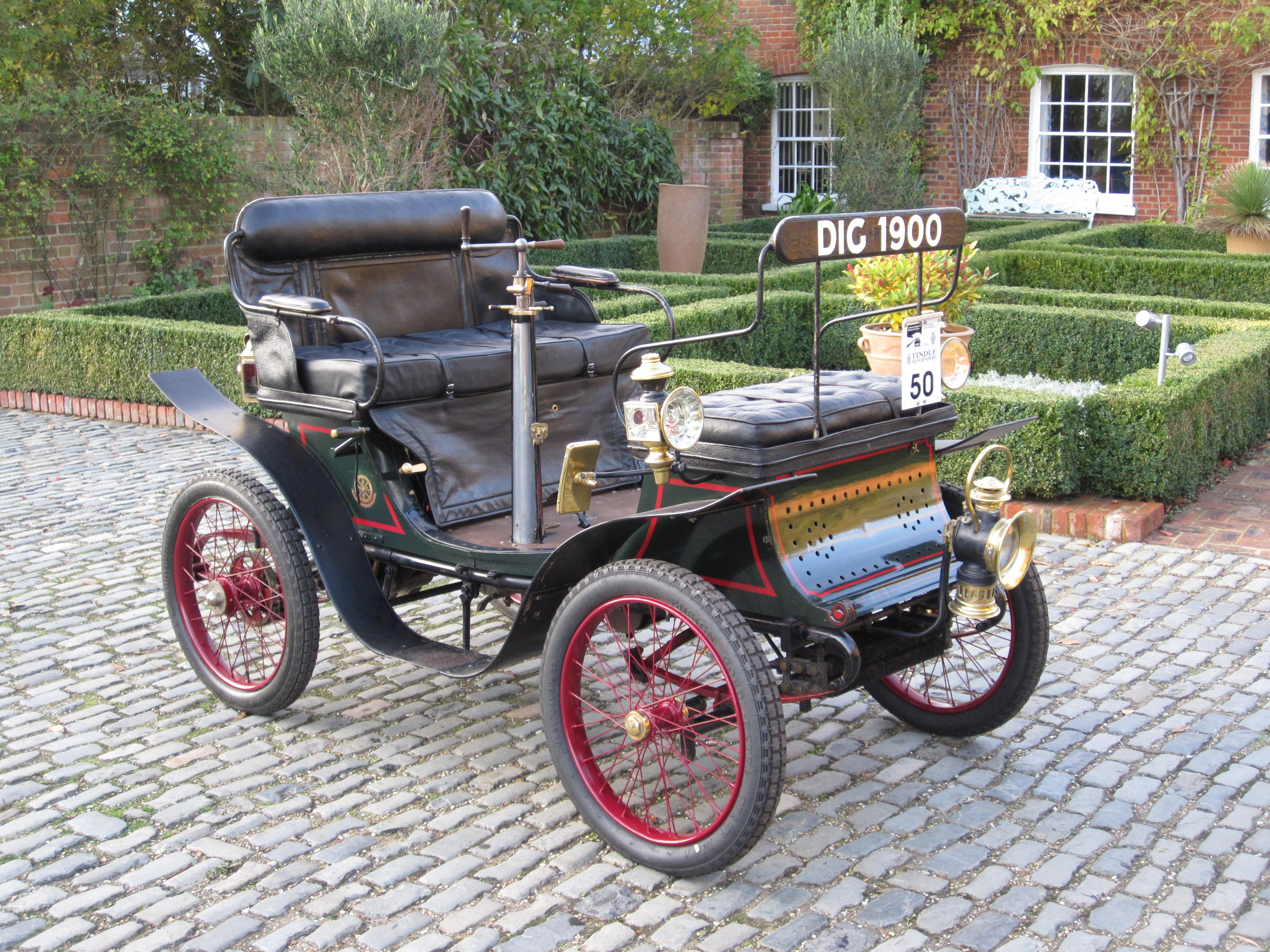
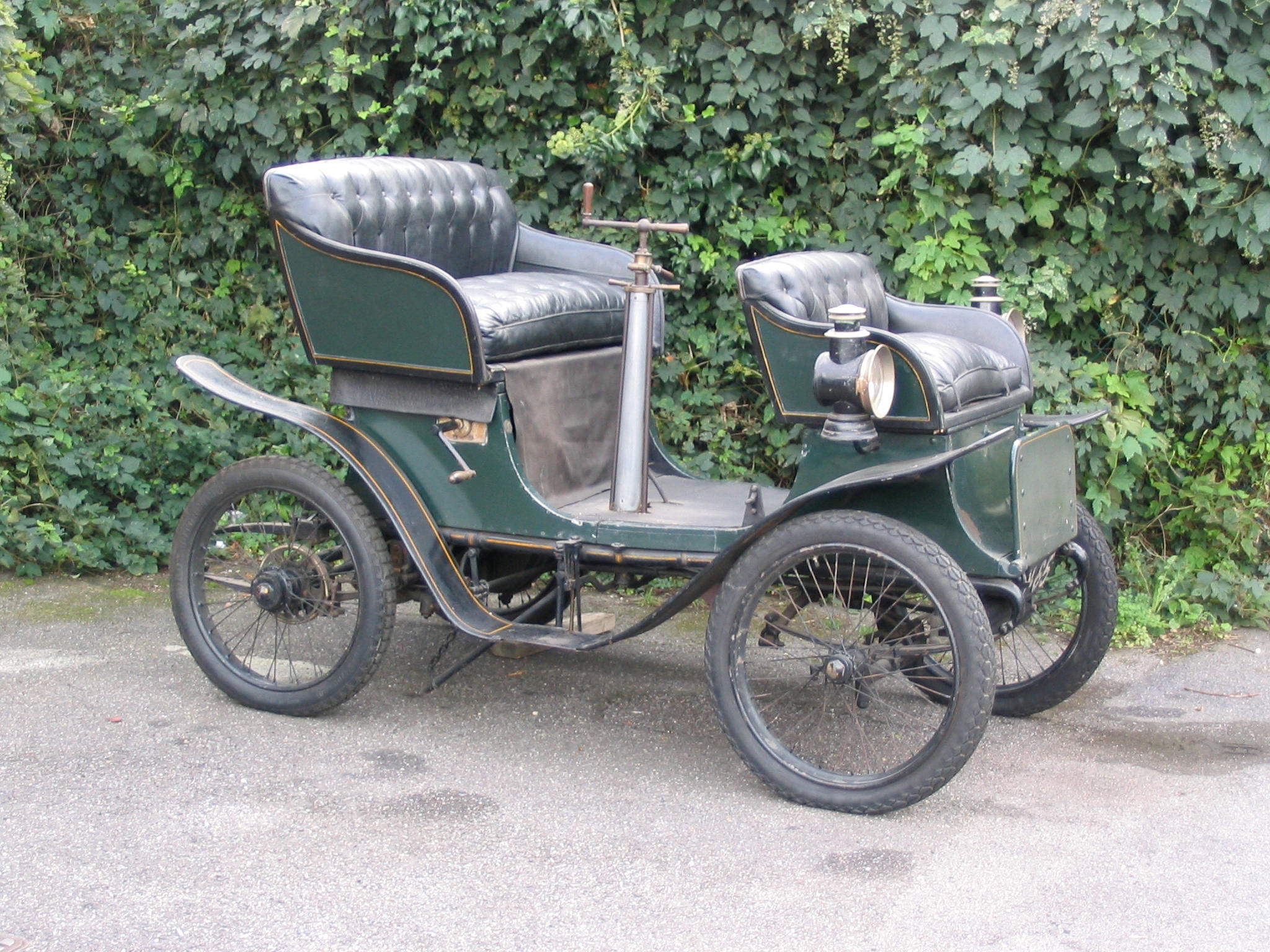

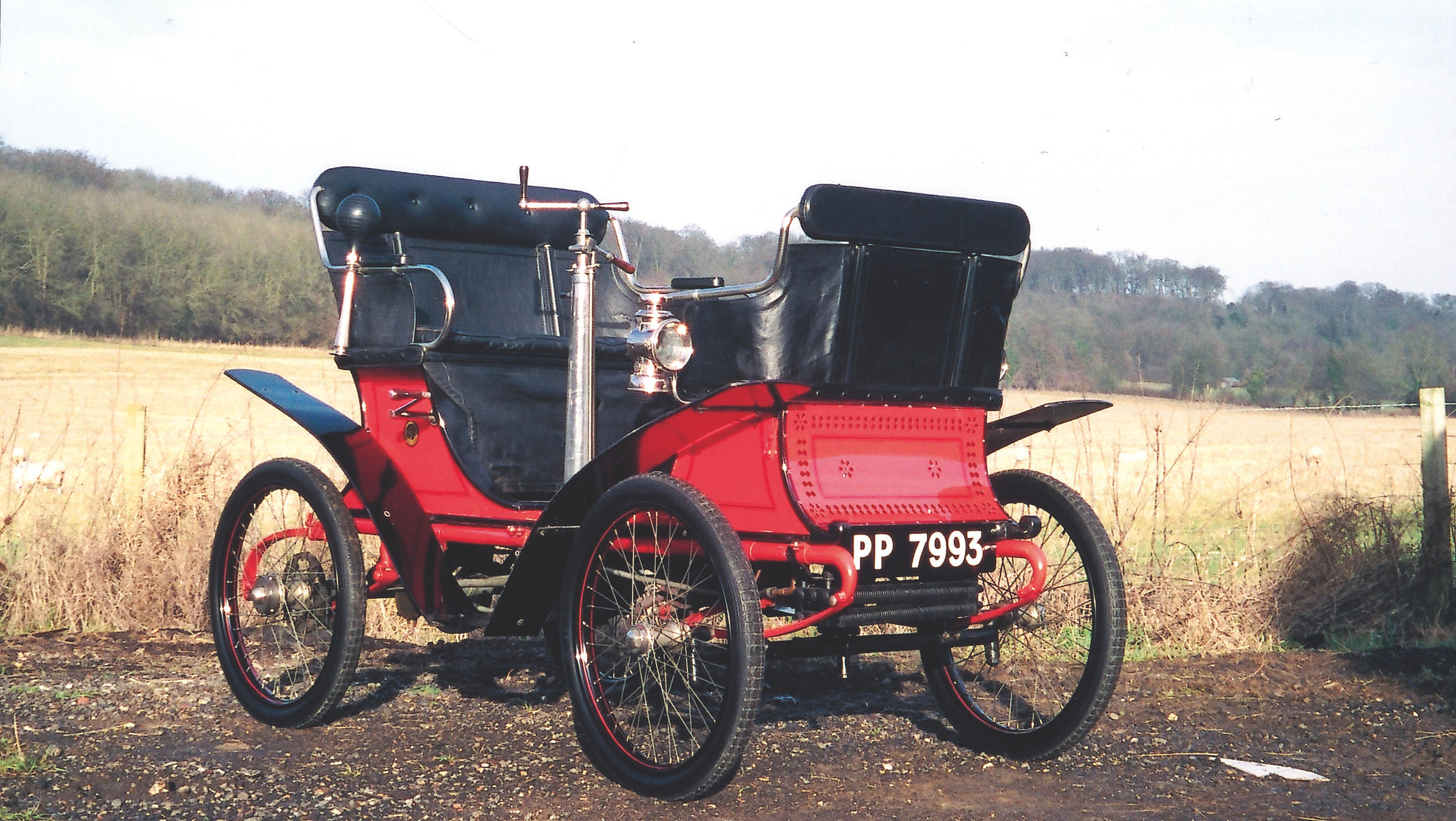
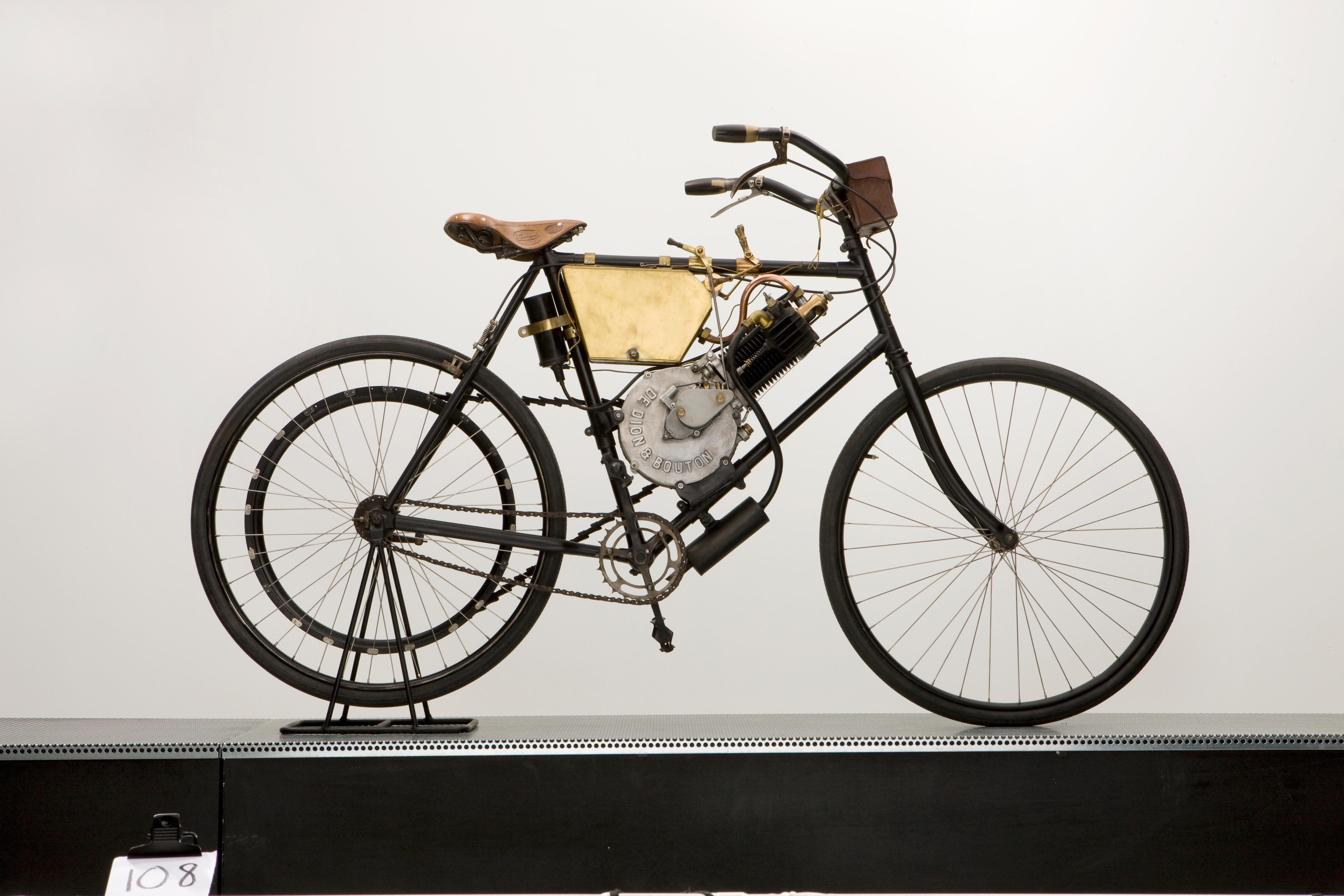
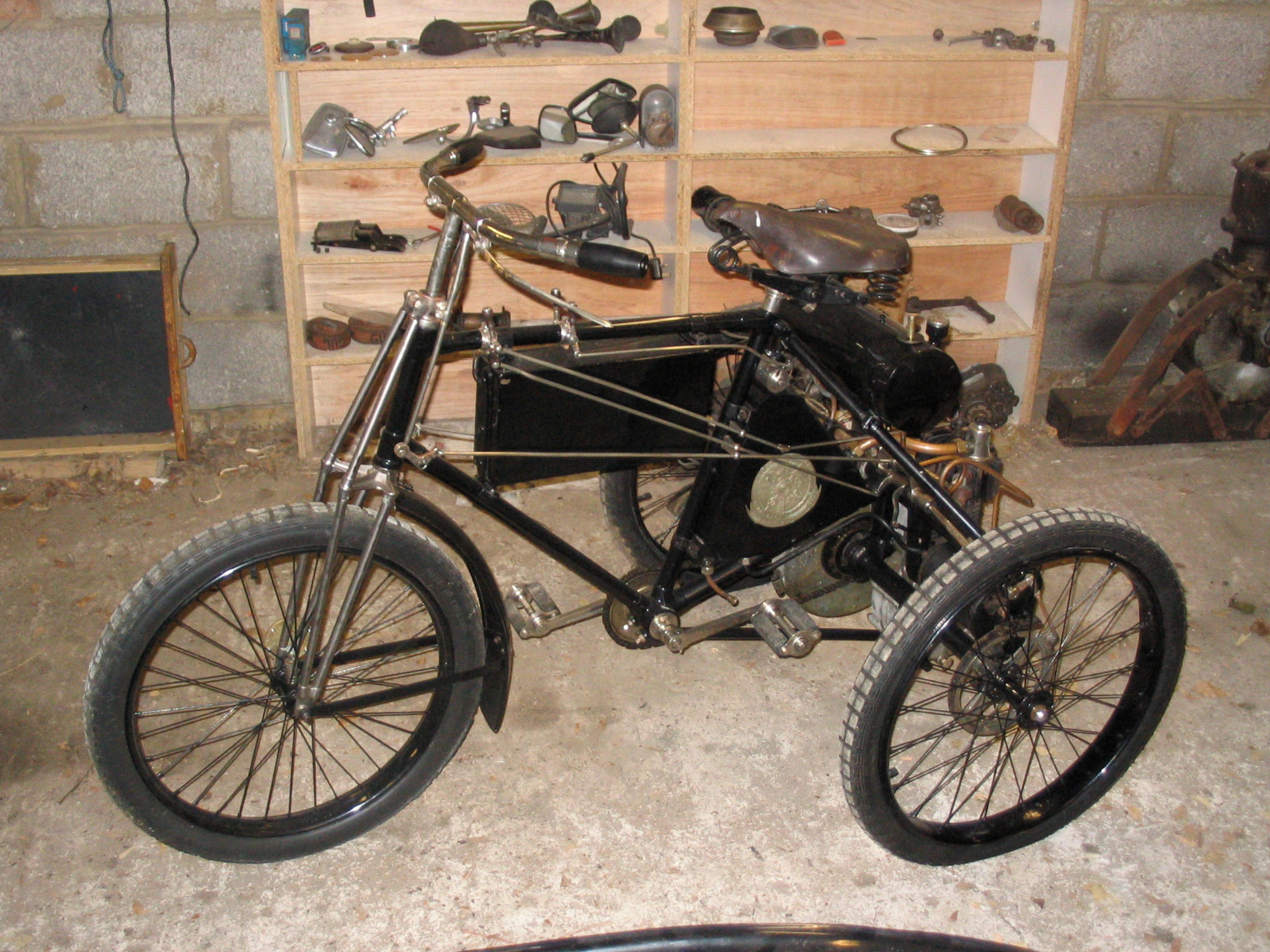
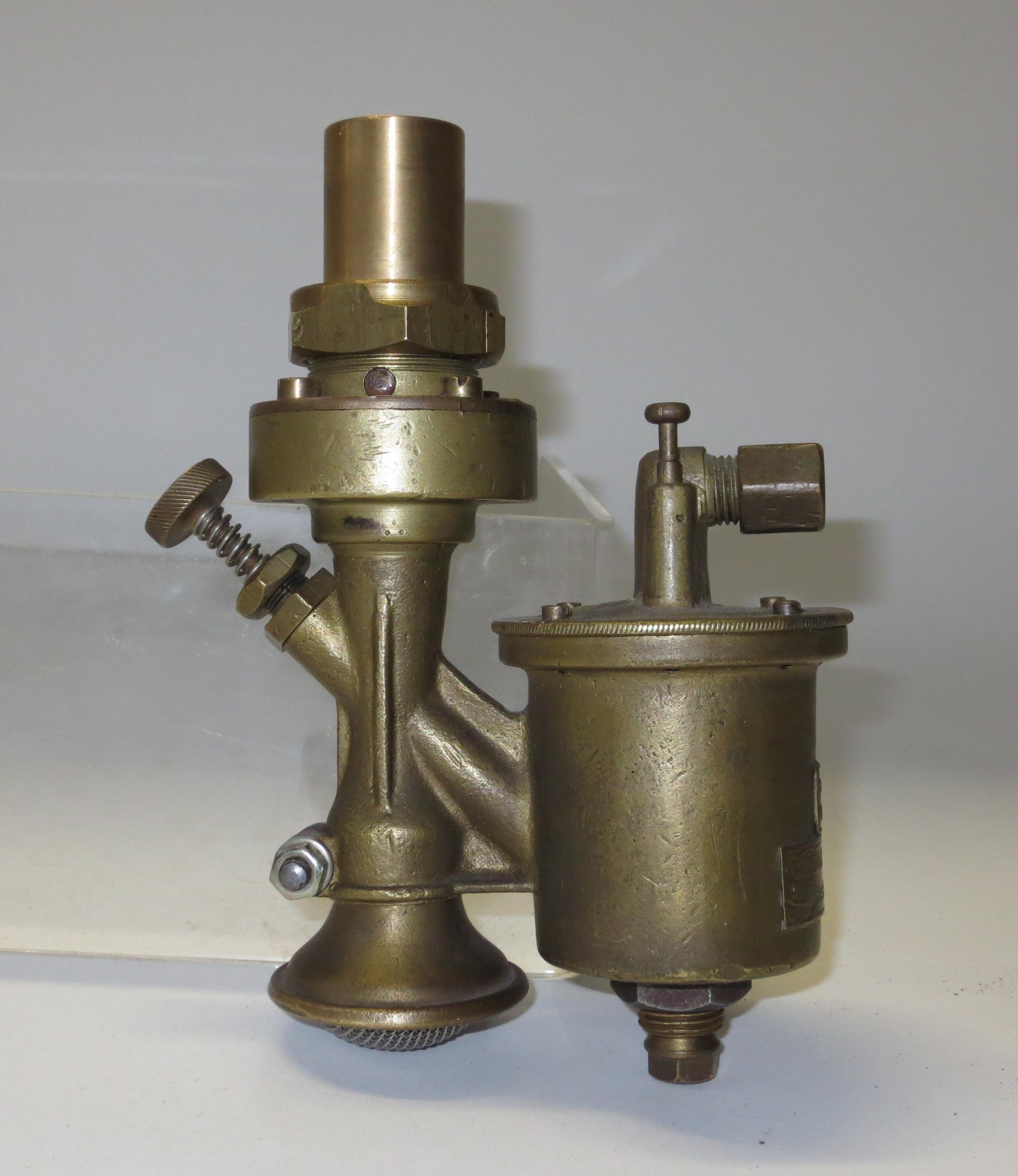
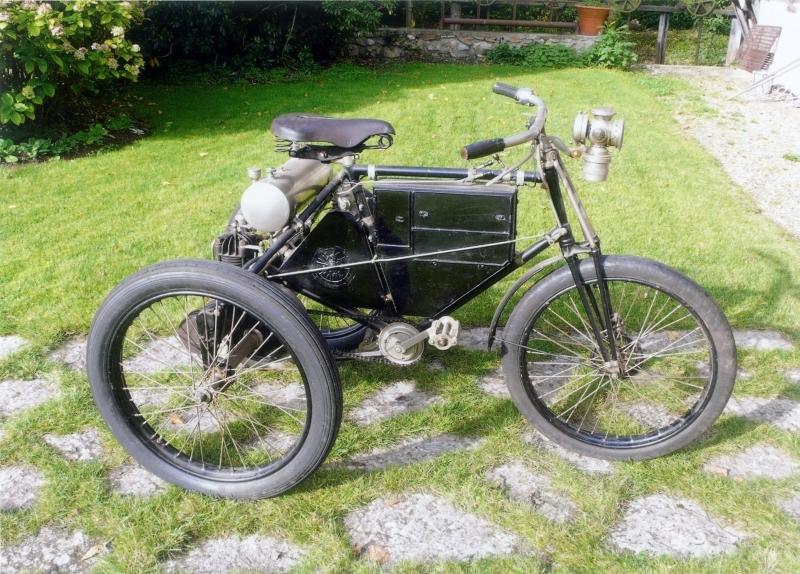
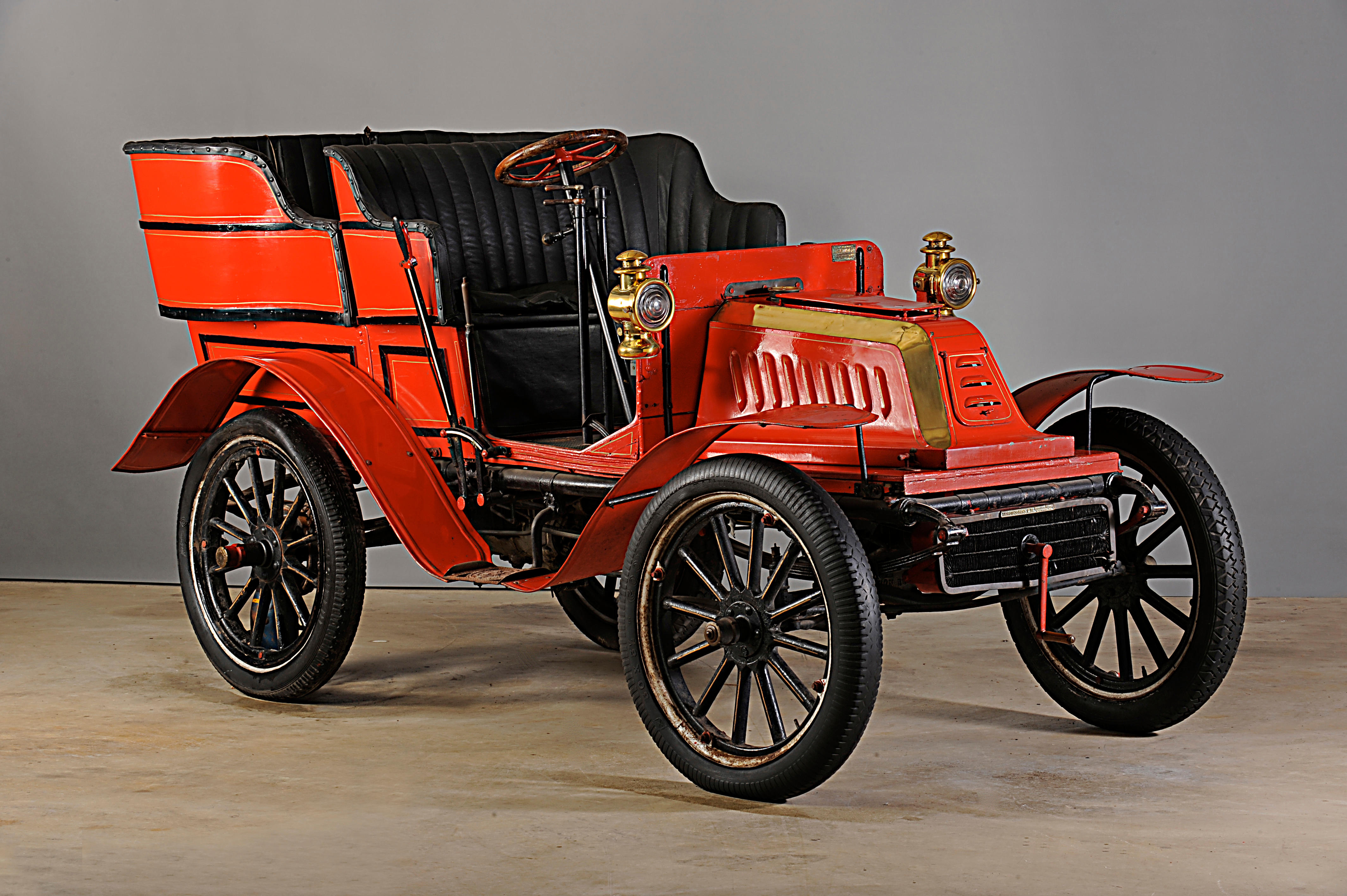
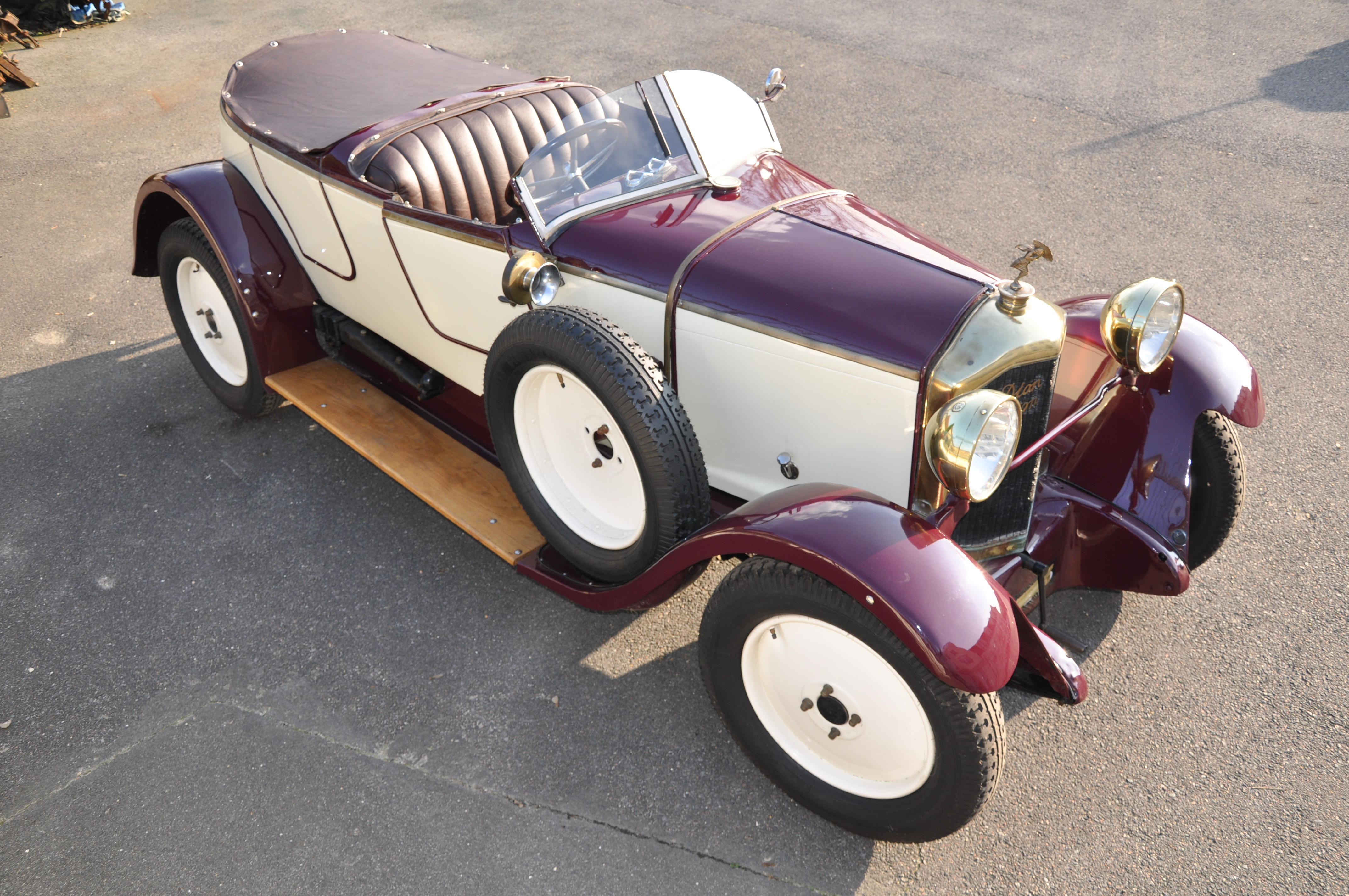



Testen Sie LotSearch und seine Premium-Features 7 Tage - ohne Kosten!
Lassen Sie sich automatisch über neue Objekte in kommenden Auktionen benachrichtigen.
Suchauftrag anlegen